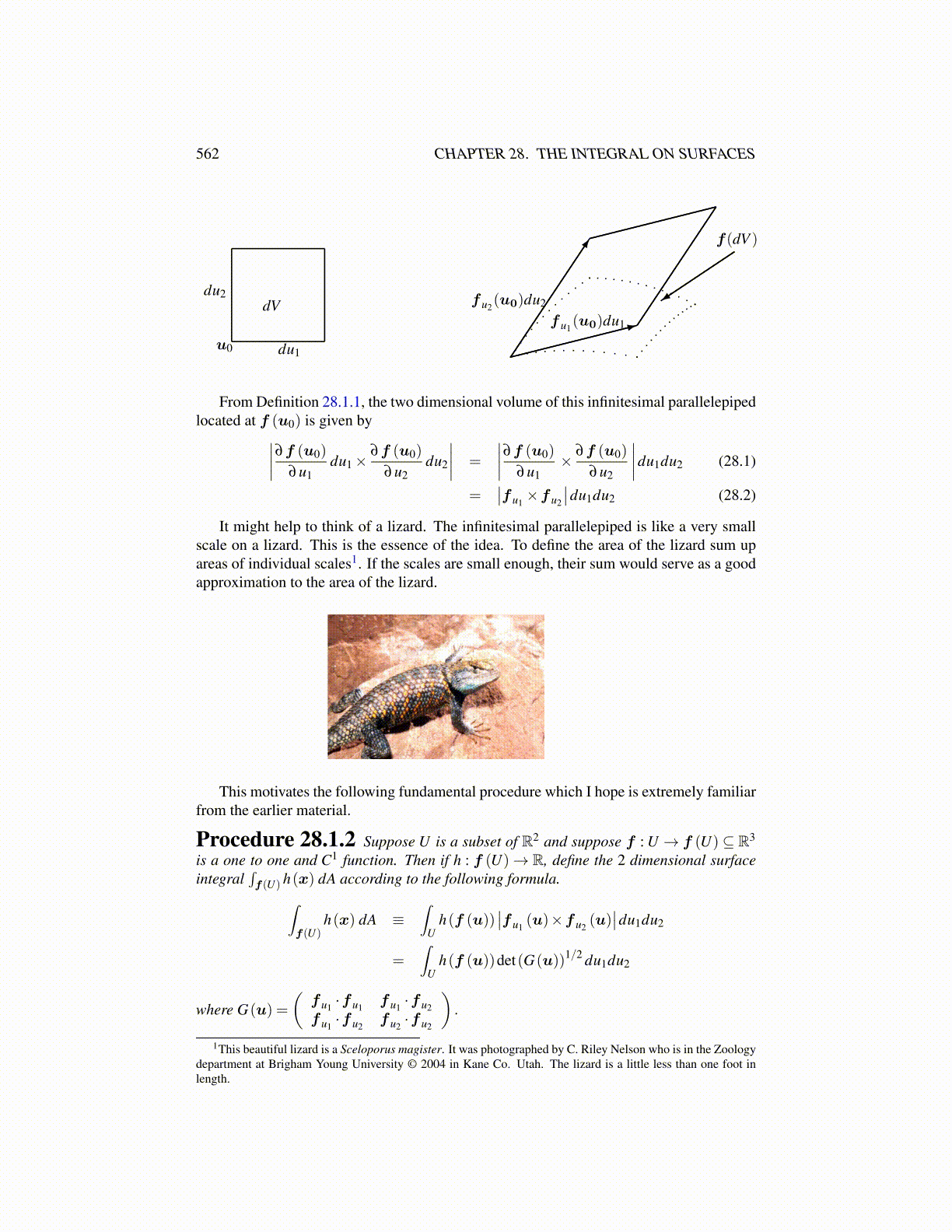
562 CHAPTER 28. THE INTEGRAL ON SURFACES
Therefore, dA =√
1+ f 2x + f 2
y dxdy as claimed.
Example 28.2.1 Let z =√
x2 + y2 where (x,y) ∈U for
U ={(x,y) : x2 + y2 ≤ 4
}Find
∫S hdS where h(x,y,z) = x+ z and S is the surface whose parametrical description is(
x,y,√
x2 + y2)
for (x,y) ∈U.
Here you can see directly the angle in the above picture is π
4 and so dA =√
2dxdy. If
you do not see this or if it is unclear, simply compute√
1+ f 2x + f 2
y and you will find it is√
2. Therefore, using polar coordinates,∫S
hdS =∫
U
(x+√
x2 + y2)√
2dA
=√
2∫ 2π
0
∫ 2
0(r cosθ + r)r dr dθ =
163
√2π.
I have been purposely vague about precise mathematical conditions necessary for theabove procedures. This is because the precise mathematical conditions which are usuallycited are very technical and at the same time far too restrictive. The most general conditionsunder which these sorts of procedures are valid include things like Lipschitz functions de-fined on very general sets. These are functions satisfying a Lipschitz condition of the form|f (x)−f (y)| ≤ K |x−y|. For example, y = |x| is Lipschitz continuous. This functiondoes not have a derivative at every point. So it is with Lipschitz functions. However, itturns out these functions have derivatives at enough points to push everything through butthis requires considerations involving the Lebesgue integral.
28.3 MATLAB and Graphing SurfacesI will illustrate with an example.
[s,t]=meshgrid(0:.02*pi:2*pi,0:.02*pi:pi);[u,v]=meshgrid(0:.02*pi:2*pi,-1.4:.2:1.4);hold onsurf(sin(t).*cos(s),sin(t).*sin(s),cos(t),’edgecolor’,’none’)alpha .7surf(.5*cos(u),.5*sin(u),v,’edgecolor’,’none’)axis equal
This graphs two surfaces, a cylinder and a sphere. The .7 makes the sphere slightlytransparent. You can adjust this number to be anything between 0 and 1 depending on howtransparent you want it to be. If you just wanted to graph the sphere, you could forgetabout the hold on and simply include the first of the two lines beginning with “surf”. Youshould experiment with this. These are perimetrically defined surfaces because this is moregeneral than a surface of the form z = f (x,y) and the integral is defined on these moregeneral kinds of surfaces. Click on the little curvy arrow on the top of the picture whichappears to allow rotating the graph to see it from different angles.